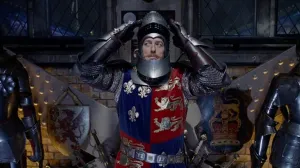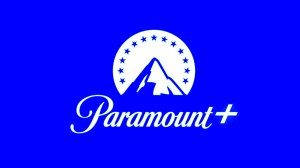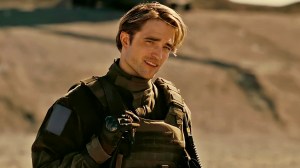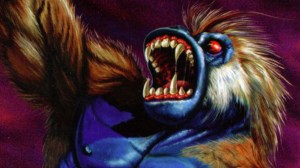It is by contractual obligation that I am not allowed to write a column this week without mentioning Thanos at least twenty times.
Videos by ComicBook.com
With that in mind:
My Missing Chapter of “The Infinity Gauntlet”

In my earliest days of reading comics, I started reading “Silver Surfer” for reasons I can’t honestly remember. It may have been because I read something interesting about it in “Marvel Age.” Or maybe, more likely, I was following Ron Lim over from “Captain America,” which I was already reading and enjoying.
It was a few months before “Infinity Gauntlet.” I jumped on board during the ramp up.
Good timing, in retrospect.
There was, however, a two part prestige format series that came out around that time called “The Thanos Quest.” Written by Jim Starlin and drawn by Ron Lim (and John Beatty on inks) with slightly fancier-than-usual colors by Tom Vincent, the two 48 page books showed you how Thanos got the six Infinity Gems onto the gauntlet.
It didn’t take 19 movies, folks. It took less than 100 pages. It happened all at once.
Viewers of the movies first will likely be shocked and not at all impressed at how the comics handled this key moment.
As a young pup with a meager comics budget, I couldn’t afford those fancy square-spined books. I had never read the two-parter until this weekend. So let’s discover “The Thanos Quest” together.
The Set-Up
Thanos has a plan to woo Lady Death. He can become an all-powerful god and be on her level if only he could collect the six Infinity Gems and stick them to his metal gauntlet.
How does he come up with this crazy idea? Thanos does some reflecting (literally, it’s in front of a reflecting Infinity (TM) Pool) to realize that this is what he needs to do. And he instantly knows where to find all the gems.
And so he goes to each person — most of whom keep possession of the stone by gluing it on their foreheads — and beats it out of them. One by one.
It starts off fairly easily. Thanos plows through the first two people with gems like a bullet through tissue paper. The book almost lost me at that point, because the battles were kind of boring. Thanos walks in, beats the guy up, and takes the stone.
Starlin uses the pages he’s afforded by the larger page count to luxuriate in some of the philosophical and more imaginative parts of these journeys. I actually like that part, though some might think it just slows the story down. It’s nice, I thought, not to just race from plot point to plot point.

Things got very interesting after those first two gems. Thanos has a deeply philosophical conversation with The Gardener before acquiring his gem. The Collector is tested and bargained with to gather another gem. The Runner gives Thanos a (pardon the pun) run for his money in a physical confrontation that takes Thanos by surprise.
It’s good to see Thanos struggle a little bit. It’s also at this point that you might realize you’re actually rooting for the bad guy. You know everything he’s doing is bad and will lead to worse things, but you’re interested now in his quest and want to see it achieved.
Things end strongly against Grandmaster, who challenges him to a winner-take-all game for the gem. It’s great gamesmanship, with neither side playing all that fair, but both expecting that.
It’s Thanos’ greatest win ever to recover all six gems, but it doesn’t quite have the results he was looking for.
Spoiler alert: Thanos does everything to woo the girl. The girl doesn’t accept him the way he thought she would. So he kills half the universe in “Infinity Gauntlet.” Talk about your toxic masculinity…
The Lettering of “The Thanos Quest”
Ken Bruzenak letters “The Thanos Quest” in his highly recognizable signature style. These are the hand drawn days, and everything looks wonderfully organic on the page.
Except — !

Thanos’ thought balloons are computer printed. It’s the bog standard Apple font of the time, too. That’s the Susan Kare-designed Chicago font.
The Coloring and Effects of Thanos Quest
Bruzenak was not alone in this early computer graphics experimentation. Colorist Tom Vincent, likewise, brought some computer graphics into play for this book.
It looks like he used some textures on backgrounds from the computer to make clouds in the skies and to rough up floors and walls in spots. He used those early computer graphics to create some of the cosmic special effects, too.
He also used them for prop special effects, like The Grand Master’s protection of his gem.

But the ultimate trip into the influence of computers on art comes in the final fight between Thanos and the Grand Master. They basically play inside a Virtual Reality game of 1990. You have the checkerboard floor, the Mac lettering, and those monolith-looking things jutting out of the floor that I wouldn’t be surprised to learn were drawn in a computer, too. The clouds in the far background look computer generated, as do the reflections on the monolith.
But Is It Worth Reading?
I think that whole era of comics is fun. I am not by any means a cosmic fan, but this era of Jim Starlin and Ron Marz writing “Silver Surfer” into “Infinity Gauntlet” is an old favorite. I’m sure there’s a bit of the Golden Age of 8 that clouds my judgment, but I love these books.
They ARE the products of their time, in that they’re not taking superhero/cosmic comics so dead seriously as we expect them today. They wear their genre trappings as a badge of honor, and it’s a lot of fun.
If you liked the movie but never read the comics, I still think they’re a lot of fun. You might have to slog your way through a few too many introspective caption boxes from Thanos, but it’s worth it.
PipelineComics.com|| Twitter || Instagram || E-mail || YouTube








